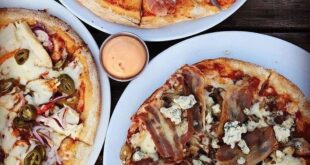Christmas is a period when family, friends and loved ones gather together to celebrate the festive season and the Royal Family are no exception to this tradition. Each year, monarchies from around the globe celebrate Christmas with different traditions and customs. But just how different are the festive conventions between Royal Families from Europe?
UK
The British Royal Family spend the Christmas period with the Queen and Prince Philip at Sandringham Estate in Norfolk.
The Queen and her family open their Christmas presents and have a candle-lit dinner on Christmas Eve with the ladies in jewels and gowns and the men in black tie.
On Christmas Day morning, the royals enjoy a full English breakfast before undertaking the famous walk to church for the Christmas Day service.
Afterwards, the family return to Sandringham Estate for a turkey roast with all the trimmings before the family perch themselves in front of the television to watch the Queen’s Speech.
After that, the family play games and enjoy one another’s company before serving themselves their own buffet supper.
READ MORE: Royal Christmas: Make the Queen’s favourite Christmas mince pies
Sweden
Each year the Swedish Royal Family begins the Christmas season with accepting Christmas trees for the Royal Palace.
Each year since the 1960s, the Swedish University of Agricultural Sciences hands over the Christmas trees to a member of the Swedish Royal Family.
This year, Crown Princess Victoria and Prince Daniel brought their son Prince Oscar to go and see the Christmas trees that were selected and Prince Oscar proudly received his own mini-tree.
The Swedish Royal Family also produces its own Christmas video each year during which the family undertakes a Christmas task such as baking cookies, sleighing, making Christmas decorations and more.
This year Crown Princess Victoria, Prince Daniel and their children Princess Estelle and Prince Oscar visited a church in Stockholm where they were told the Bible story about the birth of Jesus Christ in Bethlehem by the Reverend.
The Crown Princess’ brother Prince Carl Philip and his wife Princess Sofia visit the annual Christmas concert “Jul i Vasastan” at the Gustaf Vasa Church in Stockholm, where traditional Swedish Christmas songs are performed.
On Christmas Eve or Christmas Day, the entire Royal Family gathers at Drottningholm Slott, the home of King Carl Gustaf and Queen Silvia, for the Christmas dinner.
In honour of the Queen Silvia’s German heritage, there is always brandy-soaked weihnachtsstollen, a fruit-and-nut bread covered with powdered sugar. In Sweden, a jellied fish dish known as lutefisk is also served at Christmas.
On Christmas Day, the King also addressed the nation in his Christmas speech.
Denmark
The Danish Royal Family is very open about its Christmas plans each year and even send out a press release about their plans.
When the family are in Denmark, they spend the holiday each year at Marselisborg Palace in Aarhus since 1972.
However, roughly every other year, the Crown Prince Family (Crown Prince Frederik, Crown Princess Mary, Prince Christian, Princess Isabella, Prince Vincent, and Princess Josephine) will travel to Australia to spend Christmas with Crown Princess Mary’s family so the children get to spend the holiday with their maternal family, as well as their paternal family.
The Crown Prince family has also released a Christmas greeting message, during which they decorate a Christmas tree or make Christmas cookies.
On Dec. 23, or Lille Juleaften (Little Yule Eve), gifts are wrapped and the tree is decorated with ornaments like red paper Santa Claus (Julemanden) figures designed by Margrethe herself.
Before dinner on Christmas Eve, children put out a bowl of rice porridge for Santa’s helpers, known in Denmark as julenisse.
On Christmas Day, the Queen begins lunch with dessert, a risalamande, which is a bowl of creamy rice pudding which contends a whole almond hidden inside.
The Royal Family then eats a meal of roast goose or duck with caramel browned potatoes and red cabbage.
Each year the Queen’s annual speech is broadcast at 6pm on New Year’s Eve, a day which she spends with friends at a ball.
In 2019, the Royal Family plans to spend the holiday altogether in Denmark at Marselisborg Palace, where Queen Margrethe arrived on Friday.
DON’T MISS
Do Royal Mail deliver on Christmas Eve? [INSIGHT]
Prince Louis’s stunning resemblance to one royal family member [PICTURES]
Why Meghan Markle and Harry took Archie away for Christmas [EXPLAINER]
Monaco
The Monaco Royal Family gets into the Christmas spirit early with a Christmas tradition which began in the 1950s and was the brainchild of Princess Grace.
Each year the family hosts a Christmas Gifts Distribution party where more than 600 children aged five to 12 attend.
The children enjoy a festival of fun with their famous hot chocolate along with entertainment such as dancers, magicians, and circus performers as well as a visit from Santa Claus.
The children meet Prince Albert II and received a special present from him and Princess Charlene, with palace staff having undertaken research on each child to ensure the gift is appropriate.
On Christmas Eve, the Royal Family gathers to attend mass together.
The family takes Pan de Natale, a traditional sweet bread in the shape of a cross, which is blessed by the head of the family and then shared by the family that evening or during Christmas dinner.
The royals then wake up on Christmas morning and open their gifts together.
Netherlands
The Dutch Royal Family celebrates Christmas early as they have Sinterklaas celebrations in early December.
Along with their three princesses Catharina-Amalia, Alexia and Ariane, Queen Máxima and King Willem-Alexander attend a harbourfront parade to welcome Santa, who arrives by boat.
As Queen Máxima is from Argentina, the family often spends their Christmas break in Argentina.
On Christmas Day, there is no set tradition for opening Christmas presents as the Dutch have usually already exchanged gifts on Sinterklaas, but presents during Christmas are becoming more common.
Both December 25 and 26 are considered to be official holidays in The Netherlands, known as “First” and “Second” Christmas Day.
King Willem-Alexander’s Christmas speech is broadcast on Christmas Day around 1pm local time, having been pre-recorded at Huis ten Bosch.
Queen Máxima is also seen on TV around Christmas as she is present for the recording of Christmas Music Gala for her “More Music in Class” initiative, which was broadcast on December 22.
Norway
The Norwegian Royal Family celebrates Christmas differently to other European Royal Families.
They blend the ancient Norwegian Christmas traditions with Christmas traditions they have brought with them from their family from Denmark, Sweden and the United Kingdom.
In Norway traditionally the Christmas supper is consumed on Christmas Eve with the eastern part of the country eating Christmas ribs, the western parts of the country eating dried lamb, and the northern part of Norway eating cod.
However, the Norwegian Royal Family breaks these traditions and opts to eat grilled baby-pork on Christmas Eve, a tradition the family have followed since 1905.
The Royal Family celebrate the festive day at Kongsseteran, which is one of his private residences located in Holmenkollen, a very exclusive private estate which is decorated in ancient peasant decor.
Typically, the King’s children Crown Prince Haakon and Crown Princess Mette-Marit celebrate Christmas with the King and Queen in Oslo, Norway.
However, in recent years, the families have chosen to instead celebrate the day alone with their children at their private cabin located in the Norwegian mountains.
Princess Märtha Louise has celebrated with her father and mother in Oslo when she has not spent Christmas with her family in her private villa located in Oslo.
The family also exchange presents on Christmas Eve.
Luxembourg
The Royal Family of Luxembourg is extremely private about how they celebrate Christmas.
However, with a new heir to the throne due in May 2020, it is likely to be a joyful celebration.
Each Christmas Eve, Grand Duke Henri’s Christmas message is broadcast.
The family exchange gifts with one another and relax as a family, reportedly at their chalet in Switzerland where it is believed they may attend a traditional Christmas Eve mass.
The married royals balance their Christmasses each year, for instance in 2017, Hereditary Grand Duchess Stéphanie revealed that she and Hereditary Grand Duke Guillaume were going to be spending that Christmas with her family in Belgium.
The Grand Ducal Court at times releases a family photo at the end of the year as a means of wishing the Luxembourgish people well.
Spain
The Spanish Royal Family like other European Royals delivers an annual Christmas Eve address in the evening of December 24 from Zarzuela Palace.
Traditionally, the entire Spanish Royal Family has dinner at Zarzuela Palace on Christmas Eve.
On Christmas Day, King Felipe and Queen Letizia host a lunch for the Queen’s family at their home.
This year, even the Queen’s brother-in-law, Iñaki Urdangarin, who is currently serving time in prison is expected to have some free days away from prison.
On Christmas morning, Felipe and Letizia’s daughters, Princess Leonor and Infanta Sofia, will awaken to find a small present under the tree.
Spaniards continue the Christmas festivities to January 5, Epiphany Day, which is also the same day as King Juan Carlos’s birthday, which the family tends to commemorate together privately.
It’s on the eve of the Epiphany that Spanish children typically receive gifts from the Three Kings.
Children in Spain also eat a traditional ring of brioche filled with cream and containing a present for a child to find on January 5.
Belgium
The royal family in Belgium spend Christmas Eve enjoying a carol concert held at the Palais Royal.
The concert is attended by King Philippe, Queen Mathilde and children Princess Elisabeth, Prince Gabriel, Prince Emmanuel and Princess Eléonore and serves as a sign of their gratitude to the royal staff for their services.
King Philippe’s also records a Christmas speech which is broadcast on Christmas Eve.
To reflect the country’s different communities, he records it in the three languages used across the country: French, Dutch and German.
Source link



